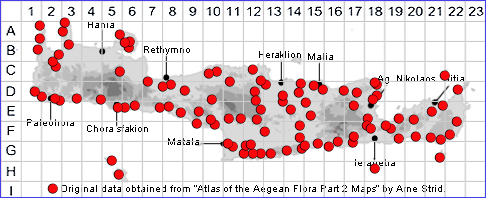SPECIES DESCRIPTION
TRIPODION TETRAPHYLLUM
Family and Genus:- See- LEGUMINOSAE
Common Names:- Bladder vetch
Homotypic Synonyms:- Anthyllis tetraphylla, Physanthyllis tetraphylla,
Tripodion lotoides, Vulneraria tetraphylla.
Meaning:- Tripodion (L) With three small feet.
Tetraphyllum (Gr) Four leaved, with leaves in fours.
General description:- Procumbent, villous to hirsute annual.
Stems:-
1) Villous-hirsute.
Leaves:-
1) Imparipinnate, with (1-)5 leaflets, rhachis, rather flat and broad;
2) Leaflets, (2-)4, the lateral very unequal, usually 1 on one side of the rhachis and
2 on the other, terminal leaflet larger than lateral.
Flowers:-
1) Inflorescences, subsessile, with 3-8 flowers subtended by an involucre.
2) Calyx, 12-15 x 4·5-6 mm, inflated at anthesis, later up to 12 mm wide, gibbous,
especially so in fruit, sericeous, frequently reddish near the apex.
a) teeth, subequal.
b) mouth, straight
3) Corolla, usually 3-coloured:
a) standard, hairy on the back, cream or pale yellow.
b) wings, yellow.
c) keel, white with a red apex.
Fruit:-
1) Legume, usually 2-seeded, constricted between the seeds: entirely contained in
the persistent calyx.
Key Features:-
1) Calyx, ± equally 5-toothed, the mouth straight.
2) Legume, 2-seeded, constricted between the seeds.
Habitat:- Dry open shrubby vegetation, olive groves, roadsides and fallow fields,
mainly over limestone. 0-600(-1000) m.
Distribution:- Widespread in the Mediterranean Region. Widespread across Crete.
Flowering time:- Late Mar to early June.
Photos by:- Steve Lenton

